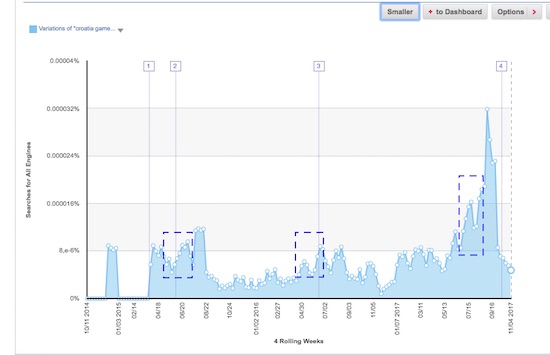
Screen test – looking at how video and television are inspiring travel
By cameron in Uncategorized
We already know second-screening is a thing – you’re watching something on Netflix and reach for the nearest mobile device to find out more about a location or a restaurant.
A few years ago, Nielsen put some figures on it, revealing that 84% of tablet and smartphone users say they use their devices as second-screens while watching television.
It’s hard to gauge where travel fits into all this but Google has been pushing it as a massive opportunity for marketers from all segments for a number of years.
More recently, newer research emerged revealing that 10% of UK consumers had booked a destination based on a TV show. The World Travel Market London 2017 Industry Report, which surveyed more than 1,000 consumers, says series such as Game of Thrones are boosting this concept of “screen tourism”.
This is supported by research from video advertising specialist Teads which surveyed 2000 Brits on holiday buying habits. The study reveals 65% of consumers take “some sort of action” after seeing a video advertisement.
Breaking this down a little reveals more than a third search online after seeing an ad, 25% check out reviews online and 21% click on the ad.
A similar survey carried out by the company amongst US consumers reveals even higher figures with 86% taking action after seeing ad. It goes on to show 49% search online, 38% check out reviews online and 27% click on the ad.
Similarly, data from Hitwise shows an increase, albeit slight, in searches around “Croatia game of thrones” and variations of those terms, before, during and after an episode airs.
Many marketers are most likely on top of all these trends particularly with companies such as Facebook calling out major trends such as the shift to video.
But, more also interesting is that travel technology companies are also taking note. Amadeus is a good example with its TravelCast development which aims to help companies improve conversion.
At the Amadeus Hotel Exchange conference earlier this year, the distribution giant showed how technology could enable travellers to click through from inspiring content to get more information and even book.
The company ran an experiment with United Airlines using the technology on an Apple TV last year, and is also looking at how it can be integrated in travel blogs and other content.
Here’s how it works:
As we approach January, traditionally a peak booking time in some regions, it will be interesting to see if any travel companies create more integrated campaigns exploiting these trends.
Related reading:
Key content shifts that should be on the travel marketing radar
Virgin Holidays brings second screening to new holiday push
Should second screening be your first priority?
![]()

